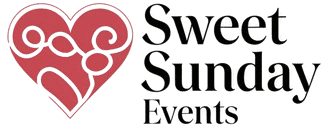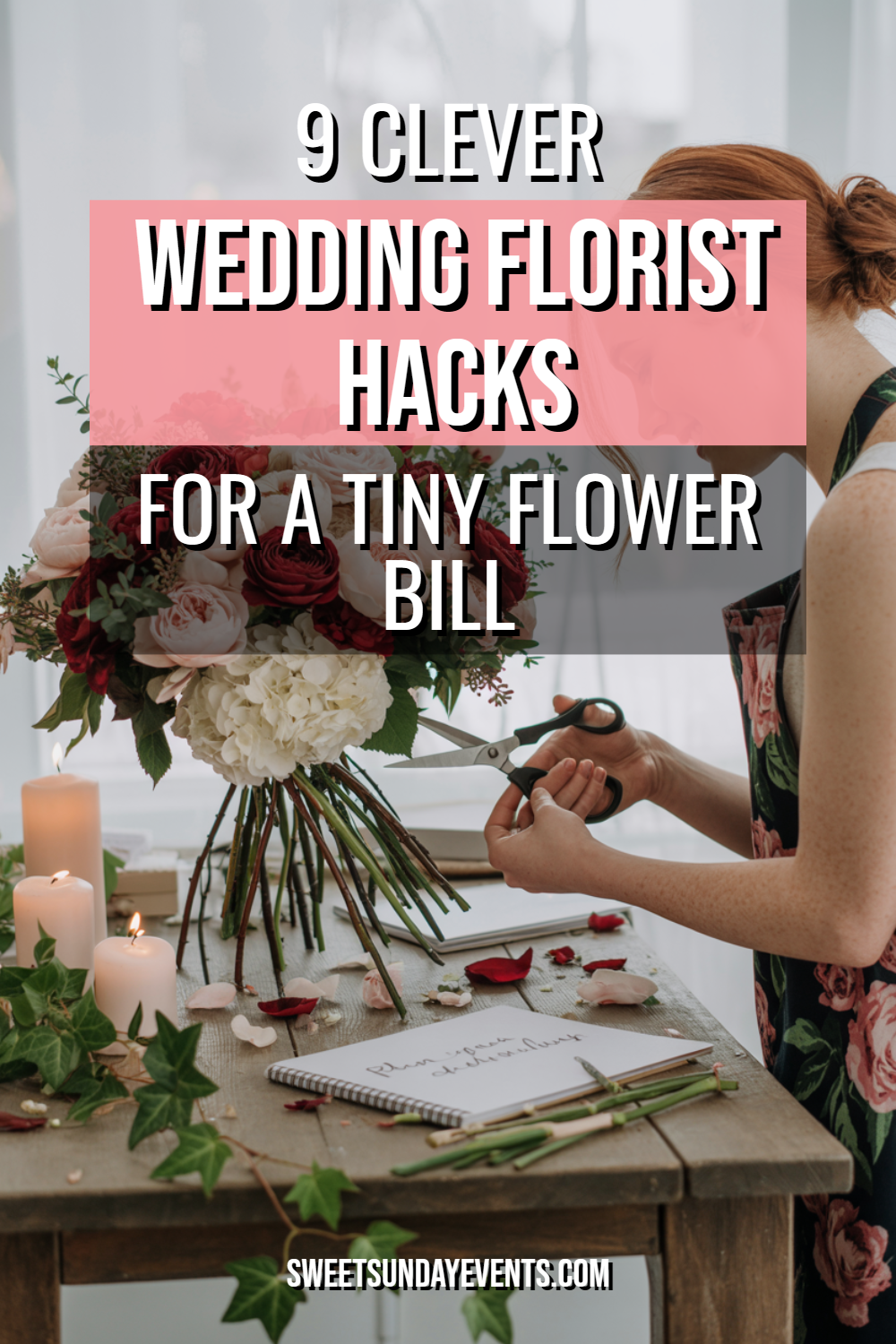Your wedding flowers don’t have to bankrupt you. After watching countless couples stress over floral budgets that rival small car payments, I’ve gathered the most effective strategies to slash your flower costs without sacrificing beauty.
1. Master the Art of Strategic Flower Selection
Seasonal blooms are your secret weapon against inflated flower bills. Peonies in December will cost you triple what they do in May, while chrysanthemums in fall are practically giving themselves away.
Your florist might not volunteer this information, but asking “what’s in season during my wedding month?” can save you hundreds.
Local flowers take this concept even further. Flowers grown within driving distance of your venue cost less because they skip expensive shipping and import fees.
Plus, they’re fresher and more likely to survive your entire celebration without wilting dramatically during the reception.
2. Embrace the Power of Greenery
Eucalyptus, ferns, and ivy cost a fraction of premium blooms but create stunning visual impact. These hardy plants photograph beautifully and add texture that pure flower arrangements often lack.
Smart couples use greenery as the foundation and sprinkle in flowers as accents.
Grocery store greenery works perfectly for DIY projects. Most supermarkets sell eucalyptus bunches for under $5, while florists charge $15-20 for the same amount. Your guests won’t know the difference, but your wallet certainly will.
3. Double-Duty Your Ceremony Arrangements
Those gorgeous altar arrangements shouldn’t disappear after you say “I do.” Plan your ceremony and reception layouts so your biggest floral pieces can move seamlessly from one space to another.
Aisle arrangements become cocktail hour centerpieces, and altar pieces transform into head table focal points.
Timing coordination makes this hack successful. Brief your wedding party or family members beforehand about which arrangements need to travel.
A five-minute flower relocation during cocktail hour can eliminate the need for duplicate arrangements.
4. Shop Beyond Traditional Florists
Grocery stores, farmers markets, and wholesale flower markets offer identical blooms at drastically reduced prices.
Trader Joe’s roses cost $5 per bunch versus $30 at traditional florists. The flowers are often just as fresh, especially if you’re willing to arrange them yourself.
Costco and Sam’s Club have surprisingly sophisticated floral departments that can handle wedding orders.
Their bulk pricing makes large arrangements affordable, though you’ll sacrifice some customization options. Book early since these venues have limited wedding slots.
5. Focus Your Floral Budget Strategically
Your bridal bouquet deserves investment since it appears in countless photos.
Everything else can be simplified without anyone noticing. Bridesmaids can carry single-stem flowers or small herb bunches that cost under $10 each instead of $50 mini-bouquets.
Reception centerpieces don’t need flowers on every table. Alternate between floral arrangements and non-floral options like candles, books, or vintage items.
Guests sitting at non-floral tables won’t feel shortchanged if your overall design feels intentional.
6. Time Your Wedding Strategically
Valentine’s Day, Mother’s Day, and graduation season create flower shortages that drive prices skyward. Scheduling your wedding during these periods can double your floral costs. Late summer and early fall typically offer the best flower prices and selection.
Friday and Sunday weddings often qualify for florist discounts since most couples prefer Saturdays. Some florists offer 10-15% discounts for off-peak wedding days, which can translate to significant savings on large floral orders.
7. Negotiate Package Deals and Substitutions
Florists prefer selling complete packages rather than individual arrangements. Ask about package pricing even if you don’t love every included item. Often, you can negotiate substitutions within the same price range that better match your vision.
End-of-season flower sales present opportunities for flexible couples.
If your florist has excess inventory from another wedding or seasonal overstock, they might offer substantial discounts. Being open to color variations or flower types can unlock these deals.
8. DIY Selectively and Smart
Full DIY florals can backfire spectacularly, but selective DIY projects offer real savings. Simple arrangements like bathroom flowers, cake table decorations, or welcome table bouquets are nearly impossible to mess up.
Save professional arrangements for complex pieces like bridal bouquets or large installations.
Flower conditioning requires advance planning but isn’t complicated. Order wholesale flowers 2-3 days before your wedding, trim stems underwater, and store them properly.
YouTube tutorials can teach you basic arranging techniques in an afternoon.
9. Consider Non-Traditional Alternatives
Potted plants cost less than cut flowers and double as guest favors. Small succulents, herbs, or flowering plants create charming centerpieces that guests can take home.
This eliminates both centerpiece and favor costs while giving guests something meaningful.
Silk flowers have improved dramatically in recent years. High-quality artificial flowers cost more upfront but can be used for engagement photos, bridal showers, and kept as keepsakes afterward.
Mix silk and fresh flowers strategically—silk for areas guests won’t examine closely, fresh for bouquets and prominent displays.
| Flower Type | Traditional Florist Cost | Alternative Source Cost | Savings |
|---|---|---|---|
| Rose Bouquet (24 stems) | $150-200 | $30-50 (grocery store) | $100-150 |
| Centerpiece Arrangement | $75-100 | $25-35 (DIY with wholesale) | $50-65 |
| Ceremony Arch Flowers | $300-500 | $100-150 (greenery + accent flowers) | $200-350 |
| Bridesmaids Bouquets (6) | $300-420 | $60-90 (single stems/herbs) | $240-330 |
Your Beautiful Budget-Friendly Wedding Awaits
These strategies can easily cut your flower budget in half without sacrificing the romantic atmosphere you’re dreaming of. The key lies in being strategic about where you splurge and where you save.
Start planning your floral strategy early, stay flexible with specific flower types, and don’t be afraid to mix traditional and creative solutions. Your wedding will be just as gorgeous, and your bank account will thank you long after the last petal falls.


